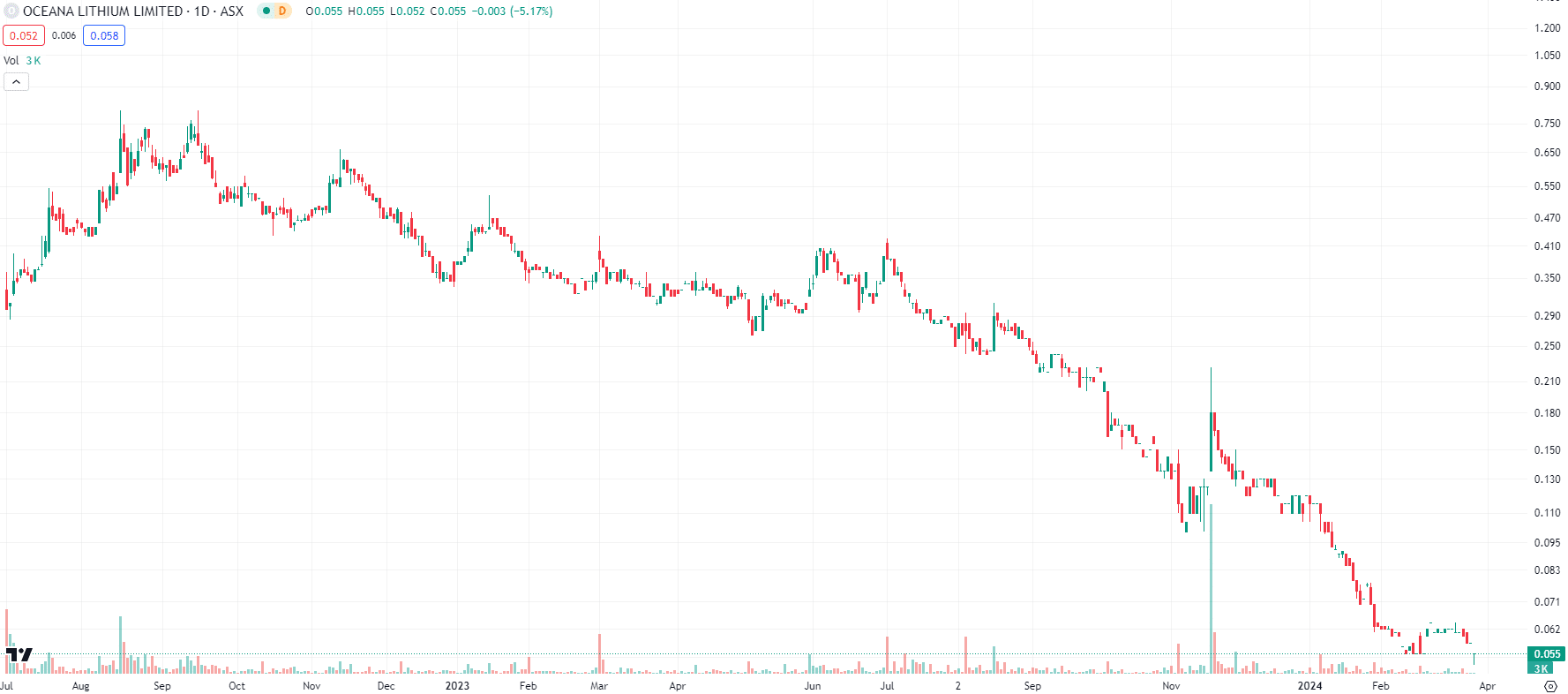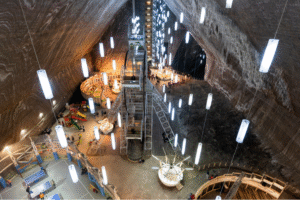Oceana Lithium tries again at Solonópole in 2024 – does it have a better chance of success?
![]() Stuart Roberts, March 26, 2024
Stuart Roberts, March 26, 2024
When Oceana Lithium (ASX:OCN) went public on ASX in July 2022, hopes were high for another major lithium discovery in Brazil. That Latin American country seemed to be on the cusp of a lithium boom thanks in part to Sigma Lithium (TSX-V: SGML) and its massive Grota do Cirilo project in the southeastern state of Minas Gerais. Lithium was well and truly in favour as a commodity. And Oceana itself had the makings of a decent project in Solonópole, which covered 115 sq km in the northeastern state of Ceará at the time of listing (it’s now 124 sq km).
Check out our recent interview with Oceana Lithium!
Solonópole looked intriguing, but the first attempt was not a success
The Solonópole project area covered historic artisanal mine sites previously mined for lithium, tantalum, niobium and tin, and there were more than 17 km of intermittent outcropping lithium-bearing pegmatites. Importantly, the location was exquisite: Solonópole was 275 km by sealed roads from Brazil’s fourth largest city, Fortaleza (population 2.7 million), while the modern port of Pecém, which was only commissioned in 1995, was just an hour’s drive further northwest. And in sunny Ceará, there was plenty of solar power and renewable energy around to make the economics of a future lithium mine look good.
Two years later, in 2024, Oceana Lithium is off just about everyone’s radar screens. The stock, which was 20 cents at the IPO and has been as high as 70 cents, is now down at 6 cents, capitalising Oceana at a mere $5m or so, of which $3m is cash.

Oceana Lithium (ASX:OCN) share price chart, log scale (Source: TradingView)
No lithium discovered yet
The trouble for Oceana is that it has yet to discover lithium. A 2,000 metre RC programme in mid-2023 got some pegmatite intercepts of the LCT variety (ie lithium-caesium-tantalum, a common source of lithium-rich mineralisation) at shallow depths, and anomalous lithium and tantalum grades from seven drill holes, but nothing much else to write home about.
No surprises there. This initial drilling campaign was merely designed to see if the mineralisation the company had identified at surface continued at depth, but most holes only went down to 60 metres max. Drilling that shallow is generally nowhere near enough to scope out a hard rock lithium discovery.
A second attempt
In mid-2024 Oceana Lithium is going back with diamond drills for its next campaign where the holes will be in the over 100 metres in depth. Importantly, Oceana has done some serious preparation for this upcoming campaign under the leadership of Brazilian/Australian geologist, and new CEO Caue (Paul) Araujo, who joined the company in September 2023. There’s been a lot more soil sampling (over 10,000 soil samples) and geophysical work to better pick the targets Oceana will be going after, and the grades in those samples have been very rich – like, more than 100 ppm lithium and up to 742 ppm in some cases. Moreover, what Oceana now understands is where the various pegmatites are sitting, and what direction they are trending in.
Attractive location
If the diamond drilling yields some decent lithium intersections, we believe interest in Oceana can be strong. Lithium is making a tentative recovery after a terrible bear market from late 2022, and the market has had some more time to get used to the idea of Brazil as a major lithium producer. As we noted above that it’s easy to get to Solonópole from Fortaleza. You just get on BR-116, the longest highway in the country, and after a couple of hours turn right at Chorozinho onto BR-122. You’re there in just three, or maybe four hours tops.
In addition to this, the country around Solonópole is flat lying, so it’s easy to explore. Also, there’s plenty of water around thanks to dams and other storage facilities. Lithium mining and processing is a thirsty business and so local water sources are essential if a mine is to succeed. Throw in the fact that there’s no national parks in the area and no indigenous population with which to negotiate native title, and it’s fair to say that the location is very attractive.
Oceana Lithium has a higher chance of success the second time around
The potential for a discovery at Solonópole with the mid-2024 campaign is, arguably, higher than was the case two years ago. Back then Oceana knew a bit about the ‘Bom Jesus de Baixo’ target, which covers old artisanal workings, because spodumene crystals had been identified at this pit and the soil anomalies had been coming back with lithium content close to 200 ppm. Now, Oceana knows a lot more about Bom Jesus de Baixo and at least five other targets –Nira, Lapinha, Zilcar II, Rolados and Urubu – where a pattern of rich soil samples and multiple identified pegmatites is repeated, particularly at Nira.
Solonópole isn’t the only project in Oceana – there is also a lithium/uranium project in Australia’s Northern Territory near Alice Springs called Napperby – but the Brazilian flagship is the project that can potentially re-rate Oceana this year. At $3m enterprise value, this explorer doesn’t have much downside!
What are the Best ASX Stocks to invest in right now?
Check our buy/sell tips
Blog Categories
Get Our Top 5 ASX Stocks for FY26
Recent Posts
ASX Gambling Stocks: How the Australian Market Works
The Australian Securities Exchange (ASX) has become one of the most active and diverse financial marketplaces in the Asia-Pacific region,…
ASX Gold Stocks Surge on Fed Rate Cut: Buy ASX Miners or Take Profits?
ASX Gold Stocks: Profits Surge After Fed Rate Cut Gold surged past US$4,300 per ounce on Friday, testing the record…
Nickel Industries (ASX: NIC) Surges on Quota Approval: Is This Beaten-Down Stock a Buy?
Nickel Industries Gains Quota Approval: What’s Next for Investors? Nickel Industries (ASX: NIC) finally has the green light investors have…




